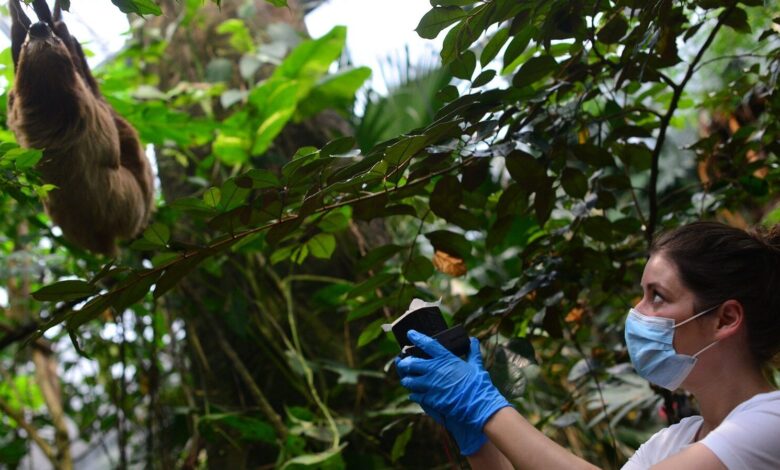
Danish scientist Kristine Bohmann collects air samples in the Copenhagen Zoo’s tropical rainforest house. Photo Credit: Christian Bendix
AnimalsTechnology United KingdomThis Method Detects Animal DNA in the Air
Unknowingly and simultaneously, two teams – one from England, the other from Denmark – tested the same non-invasive approach to identify the presence of animals through DNA collected from the sky, giving momentum to the field.
“It’s really exciting looking at how both of these papers, done independently of each other, have produced, really, the same results,” says Mark Johnson, who studies eDNA at Texas Tech University. “It adds that extra little bit of validation that what we’re seeing is real.”
Environmental DNA – or eDNA – is the technique through which tiny fragments of DNA are detected in the air to identify different species. Geneticist Elizabeth Clare did her own research at England’s Hamerton Zoo Park. She and her team used one type of air pump installed in dozens of locations throughout the zoo during half-hour sessions. As for Kristine Bohmann, a genomicist from the Globe Institute, University of Copenhagen, she placed filters in three locations around the Copenhagen Zoo. Free-floating genetic material such as fur, saliva, and feces was collected, and Clare identified more than two dozen different species, including tigers, lemurs, and the endangered Eurasian hedgehog. From the 40 air samples collected, Bohmann identified 49 species, including mammals, birds, reptiles, and fish. Airborne eDNA has the potential to revolutionize the study of biodiversity, and rapidly further entomology research.



